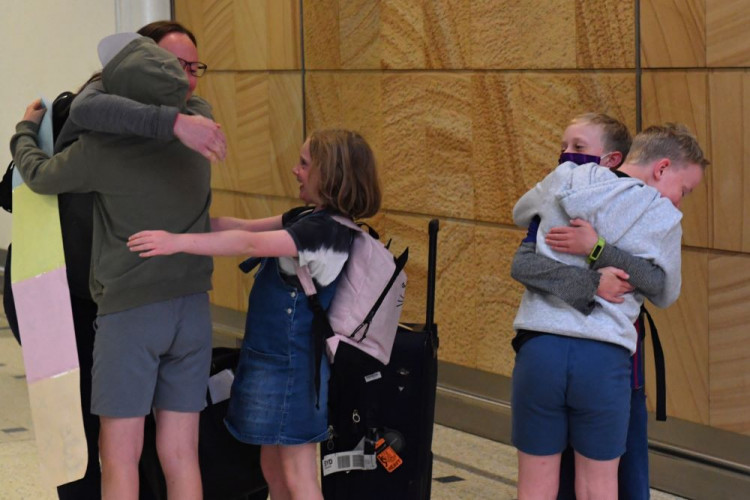A day after the trans-Tasman travel bubble started, New Zealand's Health Ministry has confirmed a border worker tested positive for coronavirus. Contact tracing is underway.
The fully vaccinated worker had cleaned planes that had traveled from high-risk countries before he caught the infection.
Meanwhile, reports say the quarantine free travel bubble is experiencing "lopsided demand," according to airlines and data companies. They say most of the traffic is from Australia to New Zealand.
The initial results from Asia Pacific's first restriction-free travel bubble since the pandemic hit, which opened Monday, showed travel patterns can depart from norms after such a long closure and may take time to return to normal. "Right now, it's one-way traffic, with almost three times as much travel going to New Zealand as in the opposite direction," Olivier Ponti, vice president at travel data company ForwardKeys told Reuters Tuesday.
In 2019, 1.5 million Australians traveled to New Zealand, while 1.4 million New Zealanders traveled to Australia, according to their tourism organizations.
Ponti told Reuters the initial travel rush from Australia to New Zealand was probably partly explained by there being around 600,000 New Zealanders living in Australia compared with 60,000 Australians living in New Zealand, as well as Australians looking to head to New Zealand's ski fields for holidays.
New Zealand Prime Minister Jacinda Ardern said the infected airport worker had been fully vaccinated but had tested positive as part of routine screening. She said the worker cleaned planes coming in from "red zone," or high-risk, countries and "all signs point" to this case having no connection to new Australian arrivals. There was no indication it would affect the bubble, The Guardian reported Tuesday.
Ardern said these kinds of cases had been anticipated by both governments when they announced the bubble rules. "The reason this person was part of our surveillance testing is because they were working in an area considered to be high risk," she said. "They are working on planes coming from countries that are high risk."
Monday was the first day of the quarantine free travel bubble. There were scenes of joy at airport arrivals areas as family members and friends were reunited. In New Zealand children held balloons and welcome banners and Maori performers welcomed the arrivals home with songs.
<iframe width="1280" height="720" src="https://www.youtube.com/embed/2c1S2pIDKH8" title="YouTube video player" frameborder="0" allow="accelerometer; autoplay; clipboard-write; encrypted-media; gyroscope; picture-in-picture" allowfullscreen></iframe>
The start of quarantine-free travel was a long time coming for families who have been separated by the coronavirus pandemic as well as struggling tourist operators. It marked the first, tentative steps toward what both countries hope will become a gradual reopening to the rest of the world.
The idea of a travel bubble between Australia and New Zealand had been talked about for months but faced setbacks because of several small virus outbreaks in both countries, which were eventually stamped out, The Associated Press reported.
Wellington Airport painted a big welcome sign near its main runway and Air New Zealand ordered some 24,000 bottles of sparkling wine, offering a complimentary glass to adult passengers.
Air New Zealand's chief operating officer Carrie Hurihanganui said the carrier had previously been running just two or three flights a day between the two countries but that jumped to 30 flights Monday carrying 5,200 passengers. "You can feel it at the airport and see it on people's faces," she said.
Travelers lined up at Sydney and Melbourne airports Monday - excited or relieved to finally fly to New Zealand after more than a year. Some were visiting family and friends, while others were attending funerals.
<iframe width="1280" height="720" src="https://www.youtube.com/embed/10zVarVhyXg" title="YouTube video player" frameborder="0" allow="accelerometer; autoplay; clipboard-write; encrypted-media; gyroscope; picture-in-picture" allowfullscreen></iframe>
Both countries have managed to keep out the virus by putting up barriers to the outside world, including strict quarantine requirements for travelers returning from other countries where the virus is rampant.






